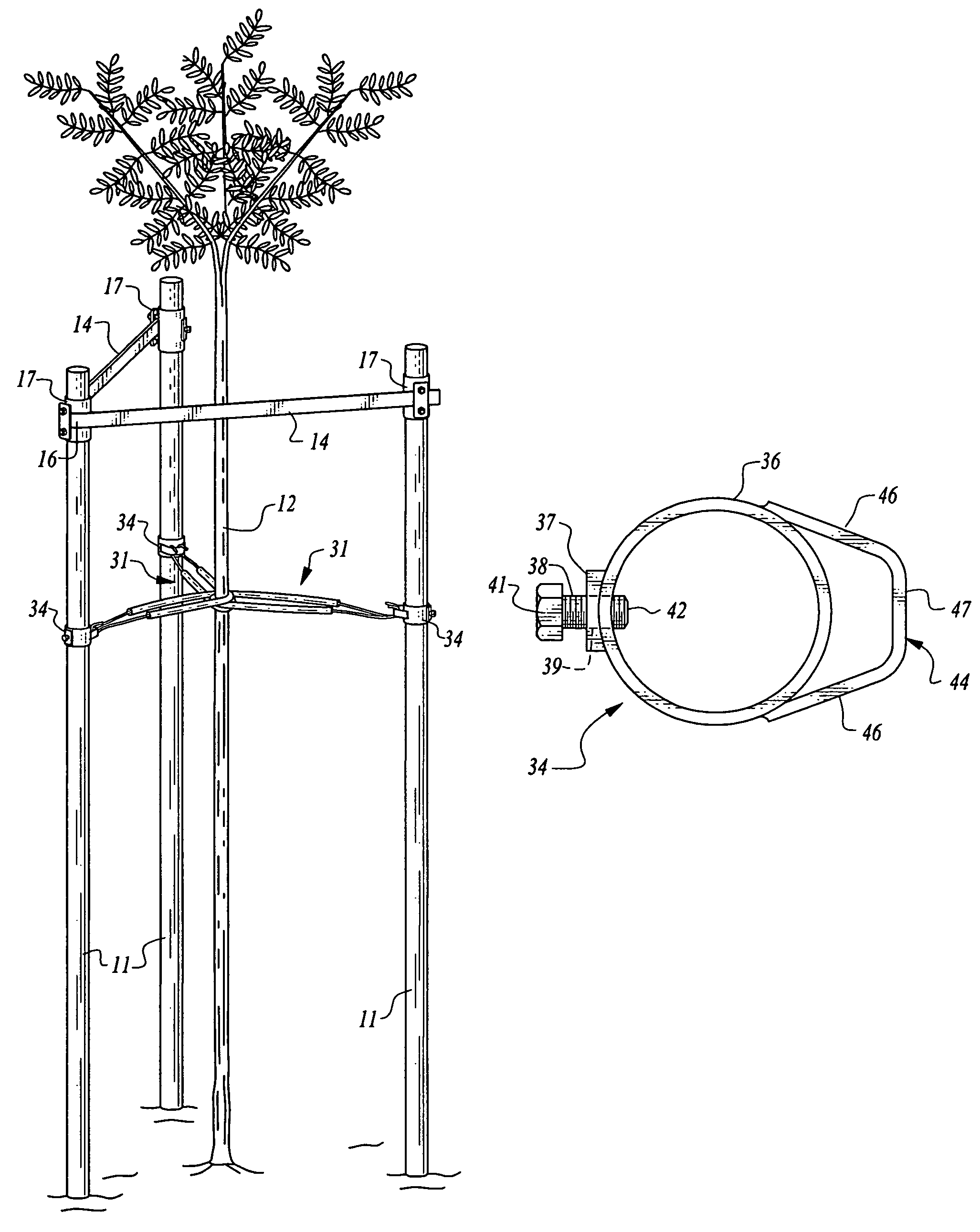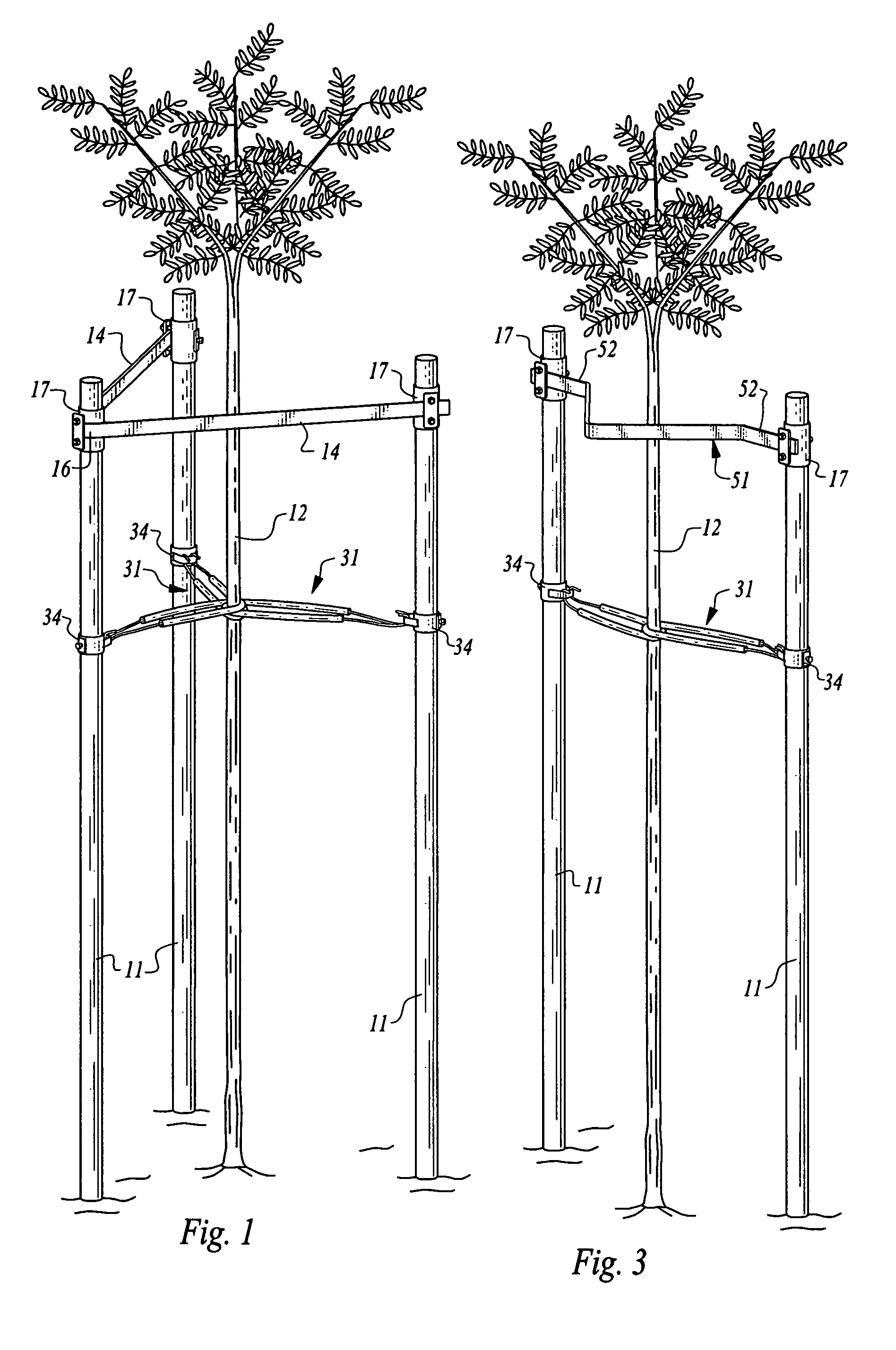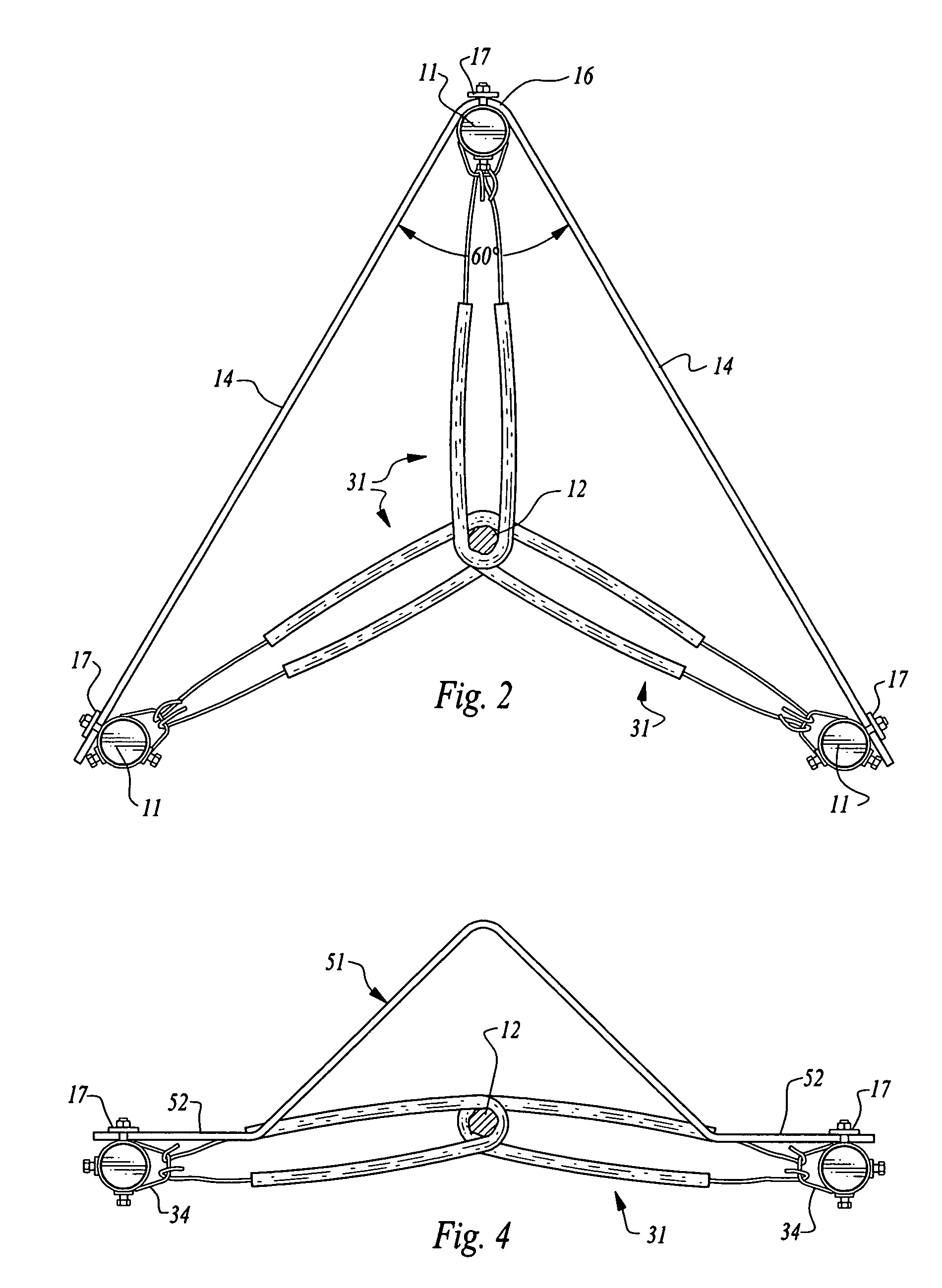Apparatus for staking trees
a technology for staking trees and apparatuses, which is applied in the direction of scaffold accessories, washstands, lighting support devices, etc., can solve the problems of not being able to give the appropriate stabilizing effect to the tree, the tree trunk tends to gouge or dig into the trunk and damage, or even destroy the tree, and the typical young tree with a small flexible trunk is not self-supporting
- Summary
- Abstract
- Description
- Claims
- Application Information
AI Technical Summary
Benefits of technology
Problems solved by technology
Method used
Image
Examples
Embodiment Construction
[0022]The present invention for supporting immature trees involves the use of stakes, rods, or poles formed of some rigid material such as wood, metal, or the like. Preferably, and for reasons which will presently be made clear, the stakes are generally circular in cross-section for receiving cylindrical sleeves, capable of vertical adjustment or movement along the length of the stake. In connection with stake supports for newly planted trees, it is common practice to use stakes approximately ten to eleven feet long, and drive them into the ground adjacent the point on the ground where the new tree will be planted, leaving about seven to eight feet of the stake length above the ground elevation, along which the tree may be releasably tethered.
[0023]In some cases, the person planting a tree will drive a stake closely adjacent the tree trunk, and then use some form of flexible tie to releasably attach the tree and stake together. There are aspects of the present invention which may be...
PUM
 Login to View More
Login to View More Abstract
Description
Claims
Application Information
 Login to View More
Login to View More - R&D
- Intellectual Property
- Life Sciences
- Materials
- Tech Scout
- Unparalleled Data Quality
- Higher Quality Content
- 60% Fewer Hallucinations
Browse by: Latest US Patents, China's latest patents, Technical Efficacy Thesaurus, Application Domain, Technology Topic, Popular Technical Reports.
© 2025 PatSnap. All rights reserved.Legal|Privacy policy|Modern Slavery Act Transparency Statement|Sitemap|About US| Contact US: help@patsnap.com



